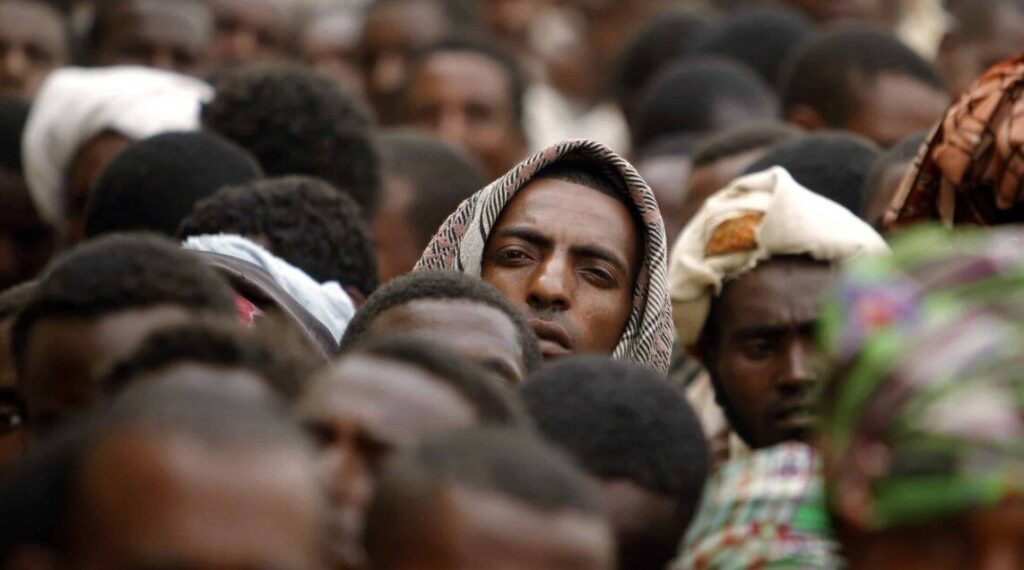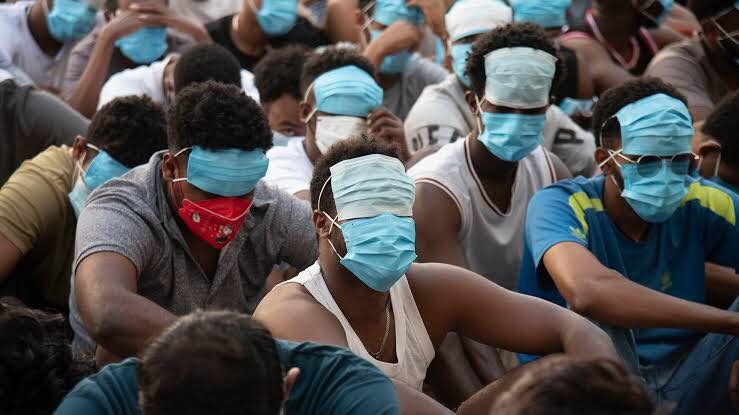War, Forced Migration, and the Extremes They Create: Anatomy of a Global Crisis
By Vol. Ali Fahd
Ed. 228| 13.10.2025
According to the United Nations Refugee Agency 2024 report, the number of forcibly displaced people due to persecution, conflict, violence, human rights violations, and events seriously disrupting public order has reached a record level of 123.2 million. This figure, beyond being a mere statistic, points to a systemic crisis that tests the limits of the international order, human rights regimes, and global security networks. This article aims to interpret this crisis through the lens of the “extremes” it generates. In this context, extremity manifests itself as populism and xenophobia in politics, radicalisation and violence within societies, and securitisation, along with the erosion of cooperation in international relations.
Mass migration movements today not only affect the immediate surroundings of the regions they reach but also transform the political, economic, and cultural dynamics of societies across continents. For instance, the refugee wave triggered by the Syrian crisis placed enormous demographic and economic pressure on Lebanon, Jordan, and Turkey, while simultaneously exposing the European Union’s internal conflicts over border management and common migration policy.
The war in Ukraine, meanwhile, triggered an unprecedented solidarity and temporary protection mechanism in Europe (EU Temporary Protection Directive). Yet, long-term challenges regarding integration, housing, and access to labour markets continue to persist.
The Transnational Nature of War and the Rise of Extremist Networks
Modern wars have ceased to be local issues and have become global phenomena. Through arms trade, the movement of foreign fighters, and information wars waged on social media, the impact of conflicts knows no borders. The Syrian civil war is one of the most striking examples. What began as popular demands for freedom quickly turned into a battleground for great power rivalries. In this environment, ISIS expanded its combat experience, refined its methods, and eventually transferred this knowledge and practice to other fragile geographies such as Africa’s Sahel region. Yet, wars have another invisible dimension: information wars.
Today, conflicts are not only fought on battlefields but also on our phone screens and social media feeds. Disinformation campaigns polarise societies, spread fear and mistrust. This not only affects those living in war zones but also distant societies across Europe and Africa. Digital propaganda around migration, security, and identity lays the ground for extremism, fostering anger and suspicion among people.
Thus, war is no longer merely a domestic issue of a single country; it has become a borderless humanitarian crisis that affects both lives on the battlefield and those behind screens.
The Psycho-Social and Political Consequences of Forced Migration: Between Radicalisation and Populism
Forced migration, beyond physical displacement, deeply undermines individuals’ sense of identity, belonging, and security. Refugees and migrants, in addition to the traumatic experiences they endure, face discrimination and economic precarity during adaptation to host societies.
Moreover, since they can neither fully belong to the new society nor return to their old homes, they often experience social exclusion. Such conditions can fuel vulnerabilities that, especially among younger generations, pave the way for radicalisation. Studies show that feelings of exclusion and hopelessness are among the risk factors that may drive individuals toward violent ideologies.
However, the issue is not limited to the psychosocial difficulties faced by migrants. In host societies, sudden population growth, perceptions of economic competition, fears of cultural identity loss, and security concerns create fertile ground for populist and far-right politics. Following the refugee influx after 2015, populist discourses in Europe increasingly portrayed migrants and refugees as threats to “national security” and “social identity”. This not only deepened political polarisation but also hindered the implementation of inclusive integration policies.
Transit Zones: Security Gaps and the Rise of Illicit Networks
The most vulnerable phase of forced migration usually occurs in transit routes. In these areas, where state authority is weak, organised crime networks engaged in human trafficking and illicit arms trade find fertile ground. The Sahel region is a striking example. Widespread poverty, unemployment, and ethnic tensions there push the youth into roles as both victims and perpetrators; the fluidity between trafficking networks and armed groups further destabilises regional security.
The Dual Nature of International Response: Rhetoric of Solidarity and Practices of Exclusion
The international community’s response to forced migration crises often reflects a paradoxical duality. On the one hand, as seen in the case of Ukraine, millions of people were quickly admitted to Europe, granted temporary protection status, and supported with large-scale financial aid, examples that demonstrate the capacity for inclusive and rapid solidarity mechanisms. The relative ease with which Ukrainian refugees accessed education, healthcare, and labour markets highlights this capacity.
On the other hand, exclusionary practices dominate approaches to other refugee groups. Pushbacks of migrant boats in the Mediterranean, obstruction of rescue operations that disregard human life, and “readmission agreements” with countries like Libya illustrate the EU’s attempts to externalise its responsibilities.
Similarly, U.S. policies such as “Title 42” at the Mexican border and the redirection of asylum applications to third countries leave migrants and refugees outside international protection standards. This dual structure questions the universal nature of refugee law and the spirit of the 1951 Geneva Convention. Selective invocation of solidarity discourses, alongside practices that categorise migrants as “legitimate” or “illegitimate,” reveals that the international community is driven less by a single legal framework and more by political interests and public sensitivities.
Conclusion
The extremes generated by war and forced migration are among the most urgent global issues of the 21st century. The problem is far more complex than what any single discipline or country can handle. An effective response requires a collective and multidimensional strategy, one that centres on human dignity and security, respects international law, promotes fair burden-sharing, and ultimately addresses the root causes of conflict. Otherwise, the grip of extremism will remain a lasting threat to the stability and prosperity of the global community.
Image Credit: The Cairo Review of Global Affairs
References
3RP, R. R. & R. P. (2024). Regional Strategic Overview 2024 – 3RP Syria Crisis. Regional Refugee & Resilience Plan. https://www.3rpsyriacrisis.org/portfolio/rso2024/
Barela, Steven. J. (2025). Digital Disinformation Operations in Armed Conflict. Geneva Academy.
Benjamin, J., & Divya, R. (2023). Beyond Bullets and Bombs: The Rising Tide of Information War in International Affairs. CSIS Centre for Strategic and International Studies. https://www.csis.org/analysis/beyond-bullets-and-bombs-rising-tide-information-war-international-affairs
Cronin, A. K. (2015, Şubat 18). ISIS Is Not a Terrorist Group. Foreign Affairs, 94(2). https://www.foreignaffairs.com/articles/middle-east/2015-02-18/isis-not-terrorist-group
Dalgaard-Nielsen, A. (2010). Violent Radicalisation in Europe: What We Know and What We Do Not Know. Studies in Conflict & Terrorism, 33(9), 797-814. https://doi.org/10.1080/1057610X.2010.501423
EU, E. S. (2025). Temporary protection for persons fleeing Ukraine. Euro Stat. https://ec.europa.eu/eurostat/statistics-explained/index.php?title=Temporary_protection_for_persons_fleeing_Ukraine_-_monthly_statistics
Fassin, D. (2012). Humanitarian reason: A moral history of the present times. University of California Press.
Frowd, P. M. (2014). The field of border control in Mauritania. Security Dialogue, 45(3), 226-241. https://doi.org/10.1177/0967010614525001
HRW, H. R. W. (2021). Q&A: US Title 42 Policy to Expel Migrants at the Border. https://www.hrw.org/news/2021/04/08/qa-us-title-42-policy-expel-migrants-border
Moreno-Lax, V. (2020). The Architecture of Functional Jurisdiction: Unpacking Contactless Control—On Public Powers, S.S. and Others v. Italy, and the “Operational Model”. German Law Journal, 21(3), 385-416. https://doi.org/10.1017/glj.2020.25
Mudde, C. (2019). The Far Right Today. Polity Press.
Schmid, A. P. (2005). Root Causes of Terrorism: Some Conceptual Notes, a Set of Indicators, and a Model. Democracy and Security, 1(2), 127-136.
UNHCR, T. U. R. A. (2023). Global Report 2023. UNHCR. https://www.unhcr.org/media/global-report-2023
UNHCR, T. U. R. A. (2024). Global Trends report 2024 [Report]. UNHCR. https://www.unhcr.org/global-trends-report-2024
WRMC, W. R. and M. C. (2021). The Economic Impact of the Syrian Refugee Crisis in Lebanon: What It Means for Current Policies—World Refugee and Migration Council. World Refugee and Migration Council. https://wrmcouncil.org/fr/publications/research-paper/the-economic-impact-of-the-syrian-refugee-crisis-in-lebanon-what-it-means-for-current-policies/?utm_source=chatgpt.com



